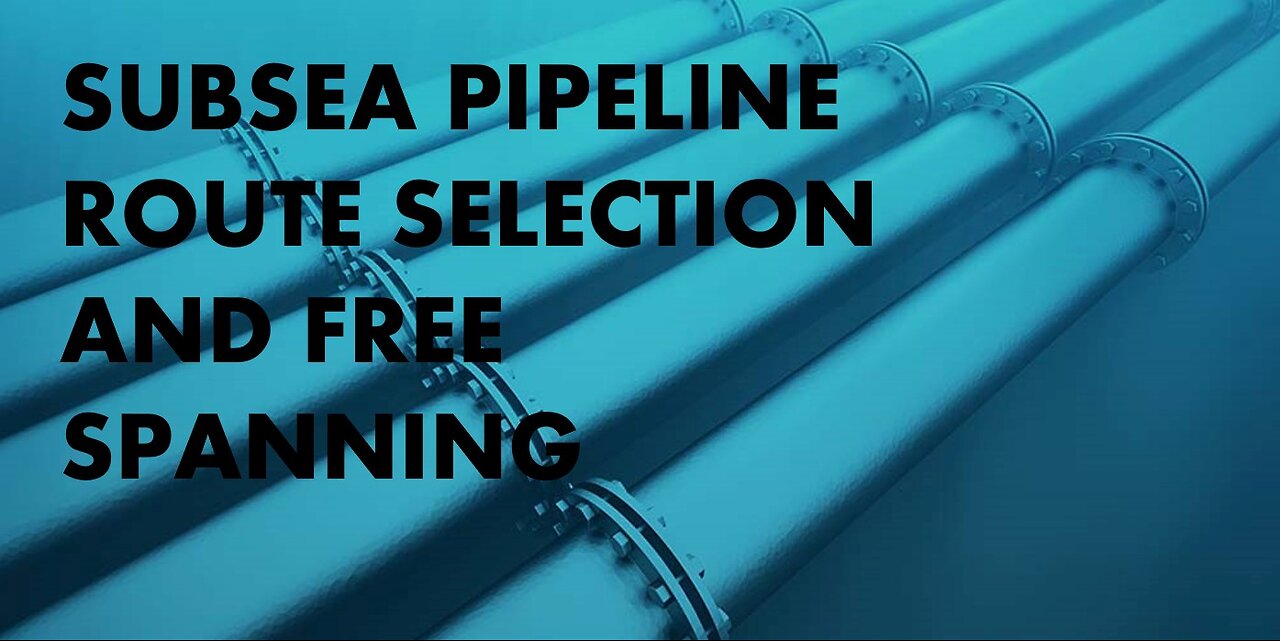Premium Only Content

Subsea Pipeline Route Selection and Free Spanning
Pipeline route selection is the process that evaluates and selects a preferred route from competing alternative routes. The process is largely governed by such controls as engineering requirements and costs, environmental (biophysical) concerns and socioeconomic issues. Pipeline route characterization is the process that determines the nature and behaviour of factors that influence and are influenced by the pipeline route. In the overall route selection process, route characterization addresses the combined effects of engineering and environmental factors such as to minimizing the free spanning of pipeline. This course deals extensively with characterization of terrain conditions and geohazards that affect pipeline route selection and pipeline construction.
Free spans on subsea pipelines are mainly caused by seabed irregularities, scouring, and other factors such as movement of the pipeline during operation or the installation of artificial supports. Free spanning of subsea pipelines is a concern during both the installation and operational phase of the pipeline life and needs to be monitored to ensure the integrity of the pipeline.
Vortex Induced Vibration (VIV) is known to be one of the major sources of dynamic loads on free spanning pipelines. Due to the flow of wave and current around the free spanning pipeline, vortex shedding is generated; when the vortex shedding coincides with the natural frequency of the span, it causes the pipeline to vibrate, either in-line with the flow (in-line VIV) or in perpendicular motion to the flow (cross-flow VIV).
For full videos you can visit this link :
https://drive.google.com/file/d/1WAtpi9TEuzvTb5MtGuh9CUtPsE0Em7Uz/view?usp=sharing
and you will be directed to a google drive link where you can download all files of this course
https://drive.google.com/file/d/1jN858DrIoa4a4XjOOQPd_HluIzZr62sZ/view?usp=drive_link
-
 1:54:36
1:54:36
PudgeTV
5 hours ago🟡 Practical Pudge Ep 52 | Sticker Mule CEO & Future NY Congressman - Anthony Constantino
9.39K -
 LIVE
LIVE
Major League Fishing
1 day agoLIVE! - Bass Pro Tour: Stage 1 - Day 1
156 watching -
 1:45:07
1:45:07
The Quartering
4 hours agoWokeness Leads To PlaneCrash, Kash & Tulsi Confirmations, Daily Wire Blasted & More
110K24 -
 5:56:13
5:56:13
Right Side Broadcasting Network
1 day agoLIVE REPLAY: Kash Patel Testifies at Senate Confirmation Hearing for FBI Director - 1/30/25
469K313 -
 1:55:33
1:55:33
The Charlie Kirk Show
5 hours agoThe Biggest Confirmation Day Of All + DC Crash Aftermath | 1.30.2025
128K104 -
 58:10
58:10
The Criminal Connection Podcast
8 hours ago $0.08 earnedTerry Turbo: THE KING OF CLUBS! (One Nation, 90's Rave Scene Documentary)
7.68K1 -
 1:11:35
1:11:35
Russell Brand
6 hours agoRFK Jr. Challenges the System While Starmer’s UK Falls Apart – SF529
188K96 -
 2:42:40
2:42:40
Bannons War Room
15 hours agoDirector of Nat'l Intelligence Nominee Tulsi Gabbard Testifies at Confirmation Hearing
152K94 -
 1:01:58
1:01:58
The Rubin Report
7 hours agoCongress Sits in Stunned Silence After RFK Jr.’s Brutal Fact-Based Wake-Up Call
123K95 -
 1:09:51
1:09:51
The Dan Bongino Show
8 hours agoTragedy on the Potomac (Ep. 2412) - 01/30/2025
719K1.45K